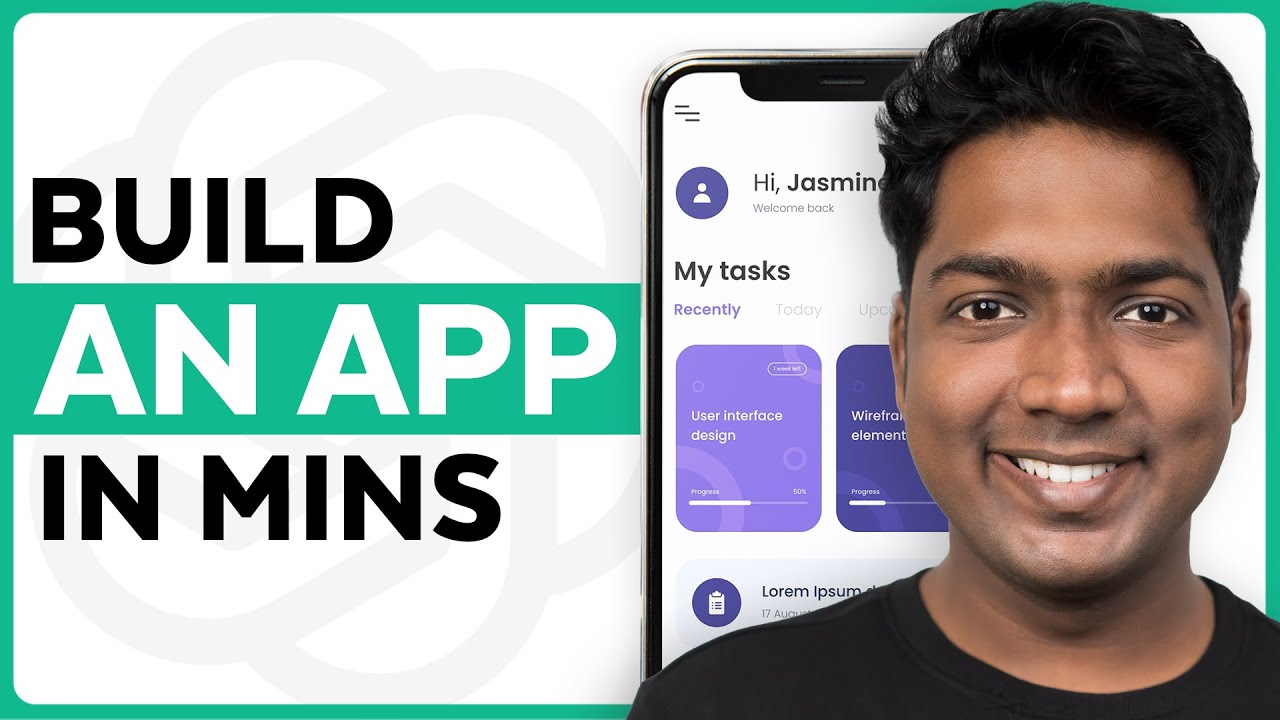Mastering ChatGPT for startup success: a step-by-step guide
How to Create a Startup using ChatGPT?
In todays digital age, startups are flourishing, and entrepreneurs are constantly searching for innovative tools and technologies to jumpstart their business ventures. One such technology that has gained significant popularity is ChatGPT. With its advanced natural language processing capabilities, ChatGPT offers immense potential for entrepreneurs looking to create a disruptive startup. In this article, we will explore the steps involved in leveraging ChatGPT to build a successful startup.
Identifying a Problem

Every successful startup begins with identifying a problem and developing an innovative solution for it. To create a startup using ChatGPT, you need to identify a problem that can be effectively solved through a conversational AI solution. Consider areas where ChatGPT can enhance user experience or automate tasks, such as customer support, content generation, or personal assistants.
How to choose a market?
A few days ago I heard a smart idea. The best foreign market to enter is not one in which the mechanism already in place there to attract users to my products can work.
Essentially, if we have targeted, creative and operational funnels through which we are successfully attracting Instagram buyers, we are foolishly looking for markets where Instagram rules and trying to do the same thing there. Instead of engaging in “speculative and furious research into the potential demand for our products in foreign markets.”
How to ensure that the product does not adapt to ready-made advertising mechanics? After all, we need to create a new mechanism for attracting users.
It turns out that it is not the product that needs to be launched in the new market, but advertising. I think additional advice on entering foreign markets would not hurt many people now.
Once you have identified a problem, conduct thorough market research to understand the target audience and competition. Analyze the existing solutions to identify gaps that your startup can fill. Evaluate the potential market size, the willingness of customers to adopt AI-based solutions, and the revenue generation potential.
Defining Your Value Proposition

To stand out in a saturated market, it is crucial to define a unique value proposition for your startup. Determine how your ChatGPT solution can differentiate itself from existing alternatives. Highlight the specific benefits it offers, such as improved response accuracy, enhanced user engagement, or cost savings for businesses.
Are you ready to give your phone to a stranger?
- Some subjects asked if they would unlock their phone before giving it to someone to check? Most of the answers are “no.”
- Another group of subjects were invited into the laboratory and asked to unlock their phones so they could be moved to another room for testing. 100 out of 103 people unlocked them and donated them.
- Secondly, this is further proof that you can easily ask people whether they will buy this or that product. If you want to check, start selling!
- Secondly, to get what you need from people, package it in the right way. For example, do not approach people on the street with such a request, but invite them to the laboratory to conduct a scientific experiment.
Building the ChatGPT Model
To create a startup using ChatGPT, you will need to build and fine-tune your own ChatGPT model. OpenAI provides a user-friendly platform called OpenAI API that allows developers to create and deploy AI models. Leverage their API and follow their documentation to train your model using relevant datasets and specific prompts. Continuously iterate and improve your model to enhance its performance.
Designing User-Friendly Interfaces
Once you have developed your ChatGPT model, focus on designing user-friendly interfaces for various platforms such as websites, mobile apps, or messaging services. Ensure that the interfaces are intuitive, visually appealing, and offer a seamless experience to users. Allow users to easily input queries and interact with the ChatGPT model.
Testing and Feedback
https://youtube.com/embed/UZtjhPmznVM
Thoroughly test your ChatGPT solution before launching it. Conduct user testing sessions to gather feedback and identify any potential issues or areas for improvement. Incorporate user feedback to enhance the performance, reliability, and user experience offered by your ChatGPT startup.
Scalability and Deployment

As your startup gains traction, it is essential to ensure that your ChatGPT solution can scale efficiently to accommodate increasing user demand. Explore cloud-based solutions and infrastructure to handle the growing user base seamlessly. Optimize your deployment process to guarantee high availability and quick response times.
Monetization Strategies
To sustain your ChatGPT startup, define effective monetization strategies. Consider various options such as a subscription-based model, freemium offerings, or partnering with businesses seeking AI-powered solutions. Continuously evaluate and refine your strategies based on user feedback and market dynamics.
Ensuring User Data Privacy
Given the sensitive nature of data shared during conversations, ensuring user data privacy is paramount. Implement robust security measures and comply with prevailing data protection regulations. Communicate your commitment to user privacy to build trust and credibility among your user base.
https://youtube.com/embed/on623d5EfPw
Creating a startup using ChatGPT can propel your entrepreneurial journey to new heights. By correctly identifying problems, leveraging market research, and building and refining your ChatGPT solution, you can develop a scalable and successful startup. Remember to prioritize user experience, constantly iterate, and focus on monetization strategies while upholding user data privacy. So, what are you waiting for? Start your journey today and unlock the potential of ChatGPT for your groundbreaking startup!
What’s the worst thing for a startup: a weak team or a small market?
Answer - small market . Because the team can be strengthened, the product can be improved, but a small market cannot be made big on its own.
If sales are not going well, then before you rush to look for strong sellers and intensify development, ask yourself, have we chosen a large enough market? After all, a large market means that no matter where you present your products, you will always find your potential client.
And if in the end we end up with a strong team and a good product in a small market, then all the losses (shortcomings) will cost us a lot of money.
Not entirely obvious consequences of the trend towards remote work.
- The freelance market will grow. It used to be that employees could only work effectively while under supervision in the office. We spent a year in quarantine remotely, and the world didn’t turn upside down 😉 Why then do you have to recruit employees for the office? Why then join the staff?
- The team freelancing segment will grow. Tasks in companies have long been performed not by individuals, but by entire teams. If companies start using freelancers more actively, why should they waste time and money on uniting and dismantling within temporary teams? If you can delegate a task to a team of freelancers and demand that it be completed in its entirety.
- The segment of medium-term (1-3 months) rental of apartments and houses will grow. If you can work remotely, then why sit in one place? After all, you can combine work and travel. And not “galloping across Europe” - but spending enough time in one place, and then moving to the next.
- The number of professional online communities will grow. As funny as it may seem, remote work has sharply reduced the amount of communication that we used to enjoy in the office 😉 A shared profession is a) a fundamentally important “friend or foe” marker for regular communication and b) a source of endless topics for conversations that will “stick” all the rest of the chatter.
- These predictions are more than just predictions. In each of these areas, real startups are emerging and attracting the attention of investors. Thriving startups can only be created based on rapidly evolving trends. Remote work certainly falls into this category and requires immediate attention to related topics.

1. Can I use ChatGPT for multiple applications within my startup? Absolutely! ChatGPTs versatility allows you to utilize it for various applications within your startup. Whether its customer support, content generation, or virtual assistants, you can leverage ChatGPTs capabilities across multiple functions.
2. How long does it take to build and fine-tune a ChatGPT model? The time required to build and fine-tune a ChatGPT model can vary depending on the complexity of your specific requirements and the available resources. It typically involves several iterations and continuous improvement efforts, which can take weeks or even months.
3. Is ChatGPT compatible with different programming languages? Yes, ChatGPT can be integrated with various programming languages through OpenAIs API. It offers comprehensive documentation and software development kits (SDKs) that enable smooth integration with popular programming languages like Python, JavaScript, and more.
4. How can I ensure the accuracy of responses generated by ChatGPT? To ensure response accuracy, it is crucial to train your ChatGPT model with high-quality and diverse datasets. Additionally, continuous iterative training and incorporating user feedback can significantly enhance the accuracy and relevance of responses.
5. What steps should I take to protect user data privacy? To protect user data privacy, you should implement strong security measures such as encryption, access controls, and regular security audits. Also, ensure compliance with relevant privacy regulations and be transparent about your data handling practices to foster trust among your users.





